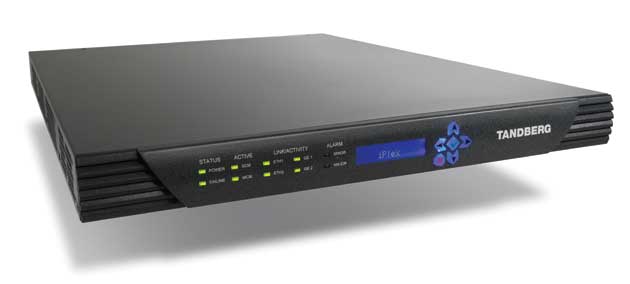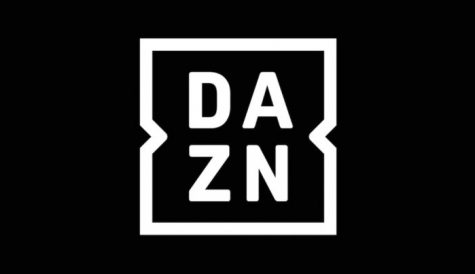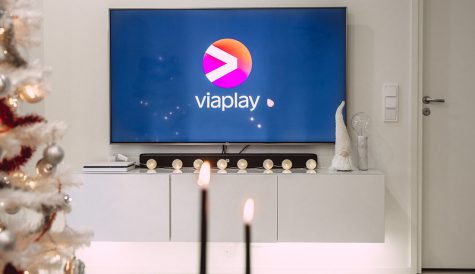Video processing
Video processing technologies are becoming increasingly important for operators with growing subscriber bases, expanding VOD libraries and HD content.
Despite the advent of exciting new services and applications, much of the focus for IPTV operators remains on improving picture quality and expanding their reach, according to Cisco’s (IBC 1.D71) chief technology officer and principal engineer, SPVTG EMEA, Nick Fielbert. He says telcos are achieving this by putting fibre deeper in the networks to that DSL lines are shortened to allow VDSL2, which can deliver up to 50Mbps. “Fibre-to-the-home is also very important where it is deployed cost effectively,” he says. “However, bandwidth saving can only really be achieved by compression and there is an obvious trade-off with picture quality and quality of experience.” At IBC, Cisco will highlight its Visual Quality of Experience technology, which Fielibert says can help increase the reach of the network by mitigating the challenges faced by service providers, including network congestion, bit errors on access lines and rapid channel change time.
 Compression technologies have played a pivotal role in enabling IPTV operators to deliver services to growing subscriber bases, with MPEG-4 leading the way in reducing the bandwidth required. Motorola (IBC 1.F30) has been investing heavily in MPEG-4 to enable operators to “make more of existing capacity and to enable new services,”says Steve Farmer, strategy and business development director for Motorola’s home and networks mobility division. Thomson’s (IBC 1.E02) set-top box unit general manager Romain Waller agrees that MPEG-4 has played a major role: “H.264 is now proven and in widespread use, delivering bitrate savings of 50% or more over MPEG-2.” He says it has also opened up the practicality of HD over IPTV. However, delivering IPTV to the greatest number of subscribers is achieved through a range of different solutions, apart from simply increasing the line speed. “Quality of service features over IP can be implemented, such as forward error correction and real-time packet retry. Subscribers with relatively slow circuits can also still enjoy VOD thanks to adaptive streaming or progressive downloads,” he says.
Compression technologies have played a pivotal role in enabling IPTV operators to deliver services to growing subscriber bases, with MPEG-4 leading the way in reducing the bandwidth required. Motorola (IBC 1.F30) has been investing heavily in MPEG-4 to enable operators to “make more of existing capacity and to enable new services,”says Steve Farmer, strategy and business development director for Motorola’s home and networks mobility division. Thomson’s (IBC 1.E02) set-top box unit general manager Romain Waller agrees that MPEG-4 has played a major role: “H.264 is now proven and in widespread use, delivering bitrate savings of 50% or more over MPEG-2.” He says it has also opened up the practicality of HD over IPTV. However, delivering IPTV to the greatest number of subscribers is achieved through a range of different solutions, apart from simply increasing the line speed. “Quality of service features over IP can be implemented, such as forward error correction and real-time packet retry. Subscribers with relatively slow circuits can also still enjoy VOD thanks to adaptive streaming or progressive downloads,” he says.
Broadcast HDTV provides the greatest challenge to IPTV in terms of service reach, says Tandberg’s (IBC 1.D61) IPTV business development director Alan Delaney, especially where they offer multiple screen viewing or DVR functionality. “Even as networks are upgraded it is important that video bitrates continue to fall while offering best quality pictures,” he says. “MPEG-4 AVC compression made HDTV viable for telcos and as it matures, multiple streams of HDTV will become the benchmark for the industry.” Delaney remains confident that MPEG-4 can still be improved significantly. However, he says that MPEG-2 still has an important role to play, and Tandberg recently announced a new MPEG-2 SD encoder, the EN8100, that it says provides a minimum of 15% increase in compression performance.
Harmonic (IBC 1.C61) continues to invest in compression technology, recently launching the DiviCom Electra 8000 encoding and transcoding platform that supports MPEG-4 and MPEG-2 codecs. “We continue to improve coding efficiencies,” says David Price, vide-president of business development. “For instance, we were able this year to show a 20% improvement in MPEG-2 HD and we expect to continue to get significant improvements in H.264 as we innovate and as we apply greater processing power to these innovations.”
Video-on-demand remains at the forefront of IPTV operator strategies. Server technology specialist Edgeware’s (IBC 4.A59) CEO Joahim Roos says the company has noticed operators wanting to drastically increase the scope and complexity of their VOD offerings: “New entrants are looking at more advanced services from the start. They’re very interested in time-shift TV, which will be the main driver for IPTV.” However, he says the growth in popularity of such services with end-users means concurrency rates are growing fast, which means managing the network more efficiently is becoming more important. For Roos, being able to cost-effectively scale a network for VOD is vital. Edgeware has developed server system specifically for on-demand content. At IBC, the company will announce a new line of appliances that Roos says fits deeper in the network, providing operators with greater scalability options.
Tandberg’s Delaney says that increasing the amount of unicasting on a network has implications for VOD platforms and content management, both of which have to scale in a cost-effective manner. He says a standards-based and open platform environment can help drive down the cost and lead times of developing on-demand services. Tandberg has developed the OpenStream Digital Services Platform, which Delaney says “opens the way for more catch-up television, start-over programme functionality and full network PVR”. He says OpenStream is based on open, published interfaces, that means operators can deploy using VOD servers, networks, billing systems, client applications, CA systems and other system components of their choosing.
Harmonic has developed a suite of integrated content preparation tools for creating on-demand video assets from various sources. MediaPrism brings together the ClearCut offline storage encoding, LiveCut scheduler, Rhozet Carbon Coder transcoding solution and Ingest Gateway. “Improved and enlarged HD services will no doubt be the number one investment priority for IPTV service providers and this will be followed by the expansion of their on-demand capabilities,” says Price.
According to Paul Delzio, Arris’s (IBC 1.F40) director, business development, service providers are overwhelmed with the amount, frequency, type and duration of video requests. “Subscribers are demanding more video from traditional media programming as well as long-tail content generated by less frequent media and user generated media”, he says. “Users are also requesting to watch this on new devices such as smartphones, PCs and other media devices. Service providers are facing a challenge to satisfy these video needs with traditional managed networks and broadband data video networks.” In response to these demands, Arris launched the ConvergeMedia platform this year and at IBC it will introduce two new hardware platforms; the XMS and the MDX server families that are designed to manage any format of video on a servers designed for very high storage libraries and high density streaming and ingest capabilities. “The management platform will consist of advanced advertising and media management capabilities to enable very targeted advertising to any device. The services will enable heterogeneous management of very large media libraries across centralised and distributed networks,” says Delzio. “Furthermore, the integration of web services into the media and advertising management will allow for greater simple access to content and the ability to personalize individual programming.”
Multiple devices
Brian Stevenson, Digital Rapids’ (IBC 7.G41) director of product management says his company has seen interest from operators that want to deliver video to multiple devices. The company’s StreamZ Live streaming encoders and StreamZ/StreamZHD encoders for on-demand content can output multiple formats, resolutions and bit rates for multiple devices, including PC, TV and mobile. “While some vendors are starting to add concurrent multi-platform output as a new capability, it’s something our customers have taken advantage of for a long time, and we continue to make advances in our simultaneous output capabilities,” Stevenson says. Digital Rapids will display a new product at this IBC called MediaMesh. This distribution system is designed to enable content owners to deliver media to distribution partners over network-based infrastructures and with automated conforming upon request, Stevenson says.
Motorola’s Farmer says multicast TV over IP networks is a key area: “It works by sending one version of the same IPTV channel over the network and delivered to multiple homes to save bandwidth.” In terms of delivering to different devices, each has a different display format so multiple versions would be delivered, or transcoded for onwards distribution from a set-top to other devices. He says the company is hearing from a number of cable operators that a gateway device is needed to deliver content around the home effectively. “A device serving as an RF entry into the home, facilitating an IP-based home network distribution model, is key to providing current and future services,” he says. “Providing all services, managed through a single interface such as this, gives an operator the flexibility to provide [triple-play] throughout the [home] using IP distribution with ease of management, and cost containment.



